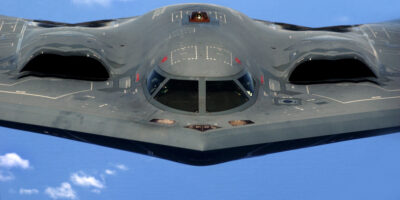F-15 vs F-18: A Detailed Comparison
When discussing military aviation, the F-15 and F-18 often come up. These two aircraft play crucial roles in the United States Air Force and Navy. They are both exceptional examples of modern fighter jets developed during the Cold War era. Despite their origins, both continue to evolve with today’s technological advancements.

Design and Development
The F-15 Eagle, a twin-engine tactical fighter, made its first flight in 1972. Developed by McDonnell Douglas (now part of Boeing), the F-15 was designed for air superiority. The focus was to gain control of the skies. It boasted a powerful radar, fast speeds, and a high level of maneuverability.
The F-18 Hornet, mainly designed for the Navy, entered service in the early 1980s. A twin-engine, all-weather multirole combat jet, the Hornet was developed by McDonnell Douglas and Northrop (now part of Boeing). Its design allows operations from both land bases and aircraft carriers. Durability and versatility are key attributes of the F-18.
Specifications
The F-15 has a length of about 64 feet with a wingspan of 43 feet. Its maximum speed exceeds Mach 2.5, making it one of the fastest fighters. The F-15 can climb at a rate of 50,000 feet per minute. Its impressive range is approximately 3,450 miles with external fuel tanks.
The F-18 is slightly smaller, with a length of 56 feet and a wingspan of 40 feet. Its top speed is around Mach 1.8. Unlike the F-15, it’s optimized for multirole missions, including air-to-ground operations. The Hornet’s range is about 1,500 miles, which suits its carrier-based nature.
Roles and Capabilities
The F-15 primarily excels in air superiority missions. Its advanced radar systems and weaponry make it a formidable fighter in air-to-air combat. Variants like the F-15E Strike Eagle enhance its ground attack capabilities. This adaptability expands its operational scope beyond traditional fighter roles.
The F-18 offers versatility in missions. It can perform air-to-air combat, air-to-ground strikes, and electronic warfare. Its ability to transition between roles makes it essential for naval operations. The F/A-18E/F Super Hornet, an upgraded variant, further amplifies its abilities.
Avionics and Technology
The F-15 features a sophisticated radar system capable of tracking multiple targets. Its avionics package aids pilots in maintaining situational awareness. As technology advances, upgrades integrate modern systems like glass cockpits and digital controls to maintain relevance.
The F-18’s avionics emphasize multifunctionality. Radar systems cater to both air and surface targets. The jet comes equipped with systems for electronic warfare and countermeasures. Newer models incorporate cutting-edge technologies for data link sharing and network-centric warfare.
Weapons and Armament
The F-15 can carry an array of ordnance such as AIM-9 Sidewinders and AIM-120 AMRAAMs. It also handles bombs like the GBU-28 and AGM-65 Maverick. This capacity ensures readiness for diverse mission requirements, whether dogfighting or ground assaults.
The F-18 carries a mix of air-to-air missiles and air-to-ground munitions. AIM-120 AMRAAMs, AGM-84 Harpoons, and JDAMs are part of its arsenal. An internal 20mm gun adds to its versatility in various combat scenarios.
Operational History
The F-15 has proven itself in numerous conflicts. It has a remarkable combat record with no air-to-air combat losses. Used extensively in the Gulf War, it achieved air superiority quickly. In more recent engagements, it continues to demonstrate its prowess.
The F-18’s operational history includes the Gulf War, Kosovo, and operations in Afghanistan and Iraq. Its ability to handle diverse missions has made it indispensable to carrier strike groups. The Hornet’s adaptability to various environments showcases its endurance.
Modern Upgrades
Both aircraft undergo constant upgrades to remain effective. The F-15EX is a modernization effort to enhance production and add new capabilities. It focuses on increased payload, advanced avionics, and electronic warfare features.
The F/A-18E/F Super Hornet adapts to new technologies, with improvements in radar and electronic systems. The Block III configuration offers an advanced cockpit, stealth enhancements, and extended range. Such updates ensure the Hornet’s relevance in modern naval warfare.
Cost and Maintenance
The F-15 generally costs more than the F-18. Its larger size and technology contribute to higher operational costs. Maintenance also requires significant resources due to its scale and complexity.
The F-18, optimized for carrier operations, benefits from a design that reduces costs. Naval requirements emphasize durability and ease of maintenance. In budget considerations, the F-18 often presents a more economical option.
Export and Global Impact
The F-15 and F-18 have seen export success. Countries like Japan and Saudi Arabia operate F-15 variants. These sales bolster strategic alliances and provide economic benefits.
The F-18 is in service with countries such as Canada, Australia, and Switzerland. Its multirole capabilities appeal to nations seeking versatility. Export versions adapt to customer needs, showcasing the platform’s flexibility.
Future Prospects
As both the F-15 and F-18 age, future developments focus on sustainability. New variants will continue to enhance capabilities. Emerging threats and technological advances drive innovation. The balance between maintaining existing fleets and developing next-generation replacements remains critical.
In summary, the F-15 and F-18 offer distinct advantages. Each plays a vital role in the military landscape. Continual evolution ensures their presence in future operations. Their contributions remain an essential part of aerial warfare strategy.
Recommended Aviation Gear
David Clark H10-13.4 Aviation Headset – $376.95
The industry standard for aviation headsets.
Pilots Handbook of Aeronautical Knowledge – $25.42
Essential FAA handbook for every pilot.
As an Amazon Associate, we earn from qualifying purchases.




Subscribe for Updates
Get the latest articles delivered to your inbox.
We respect your privacy. Unsubscribe anytime.